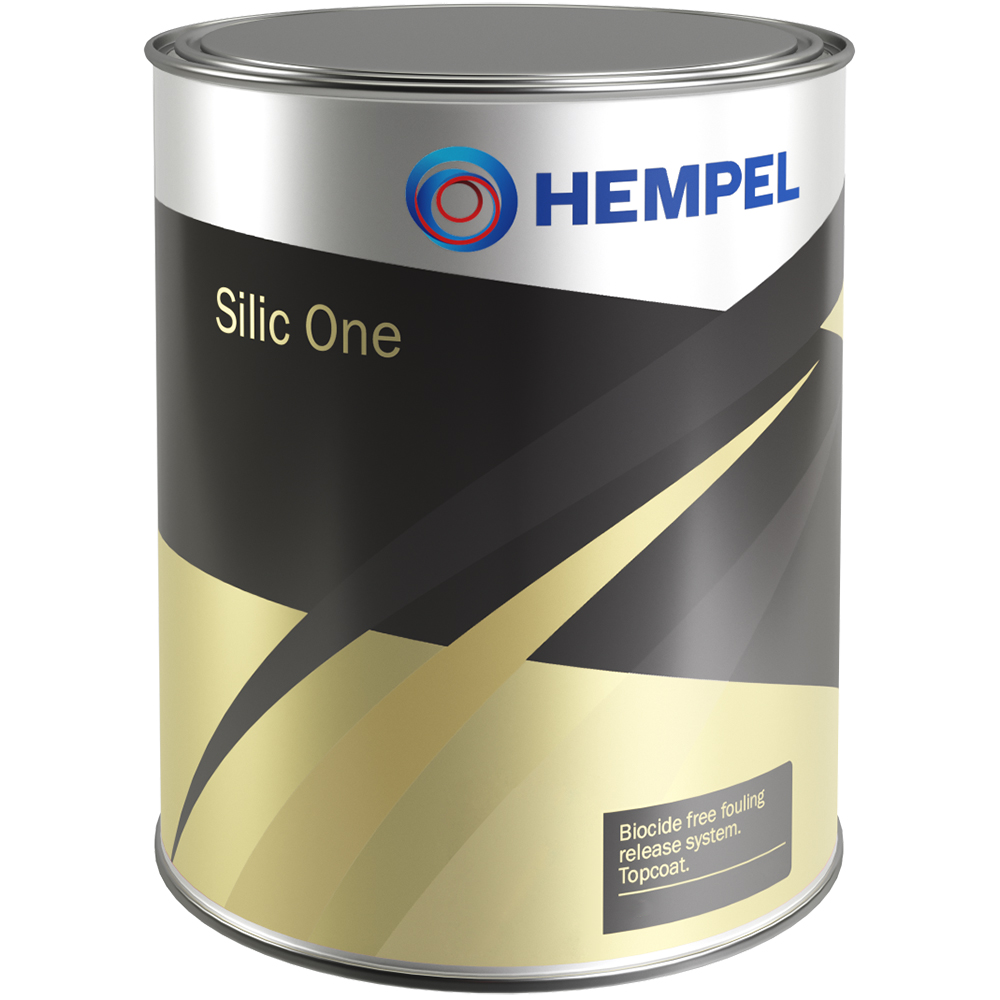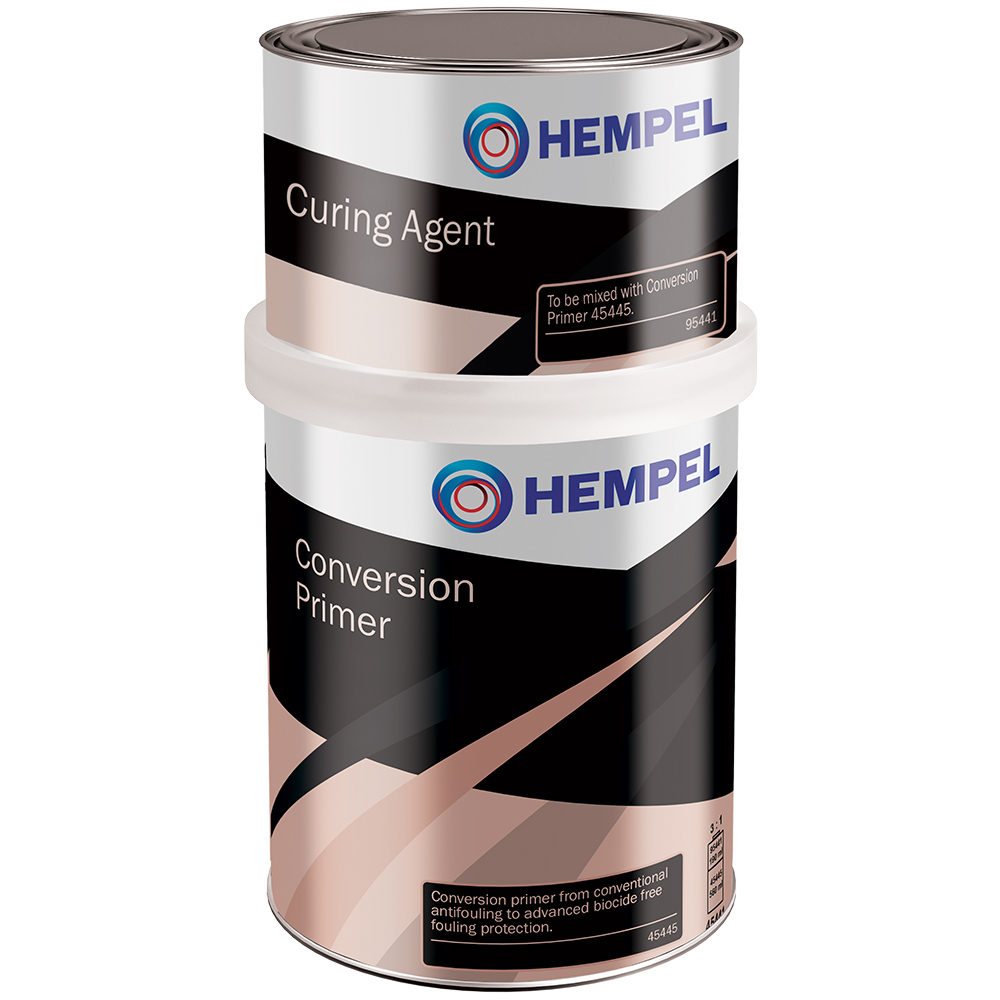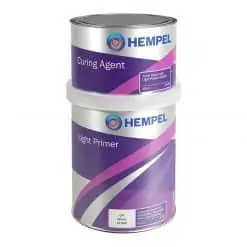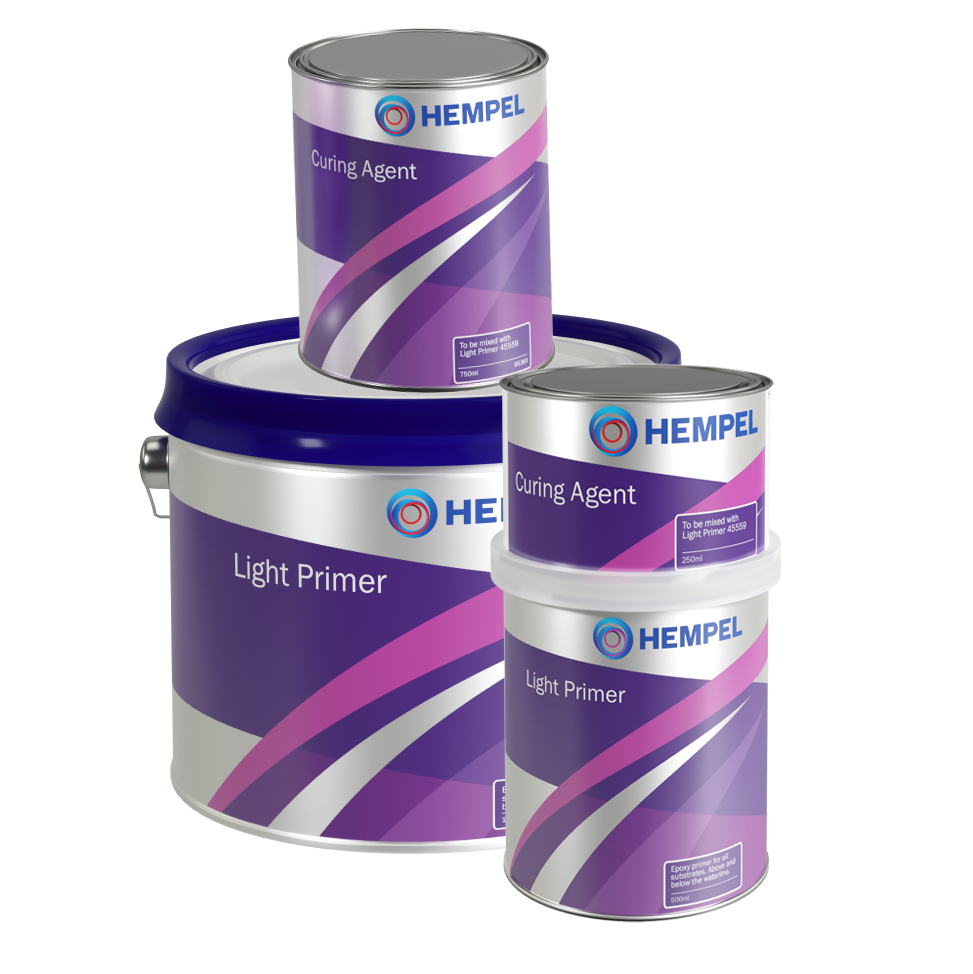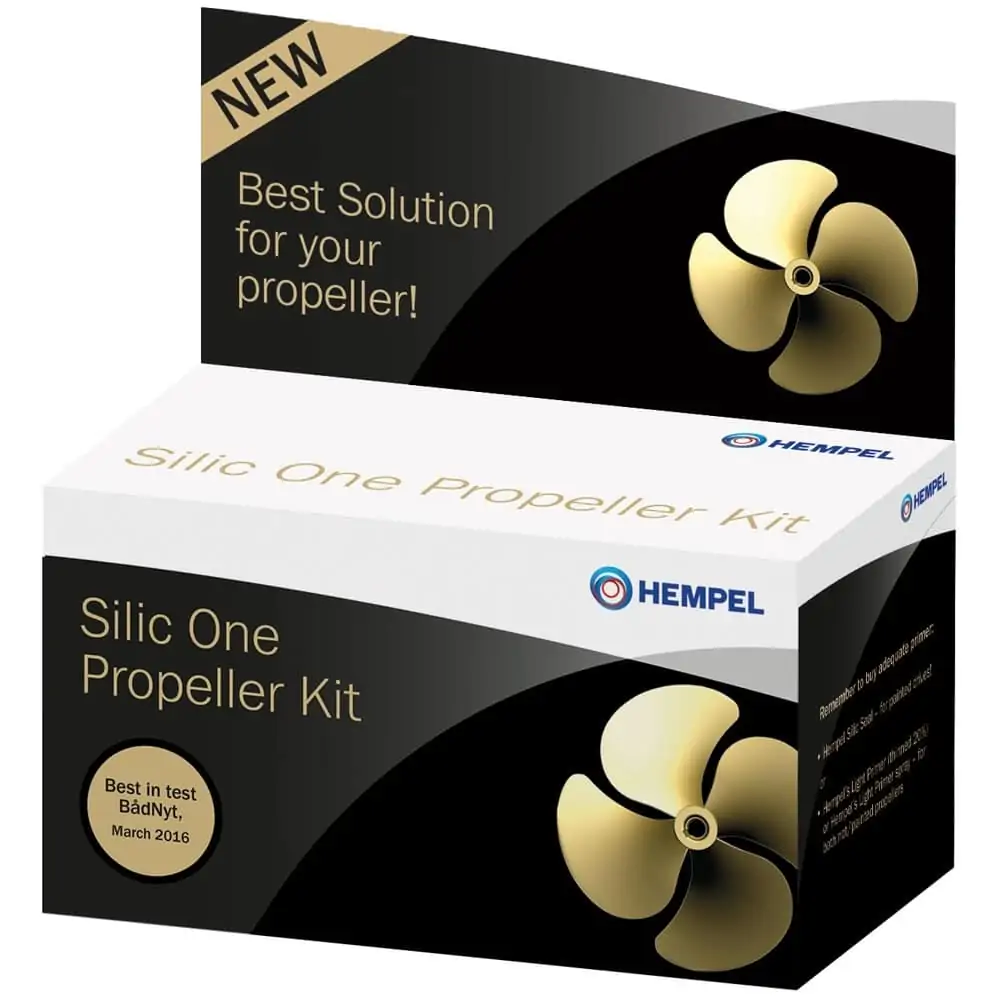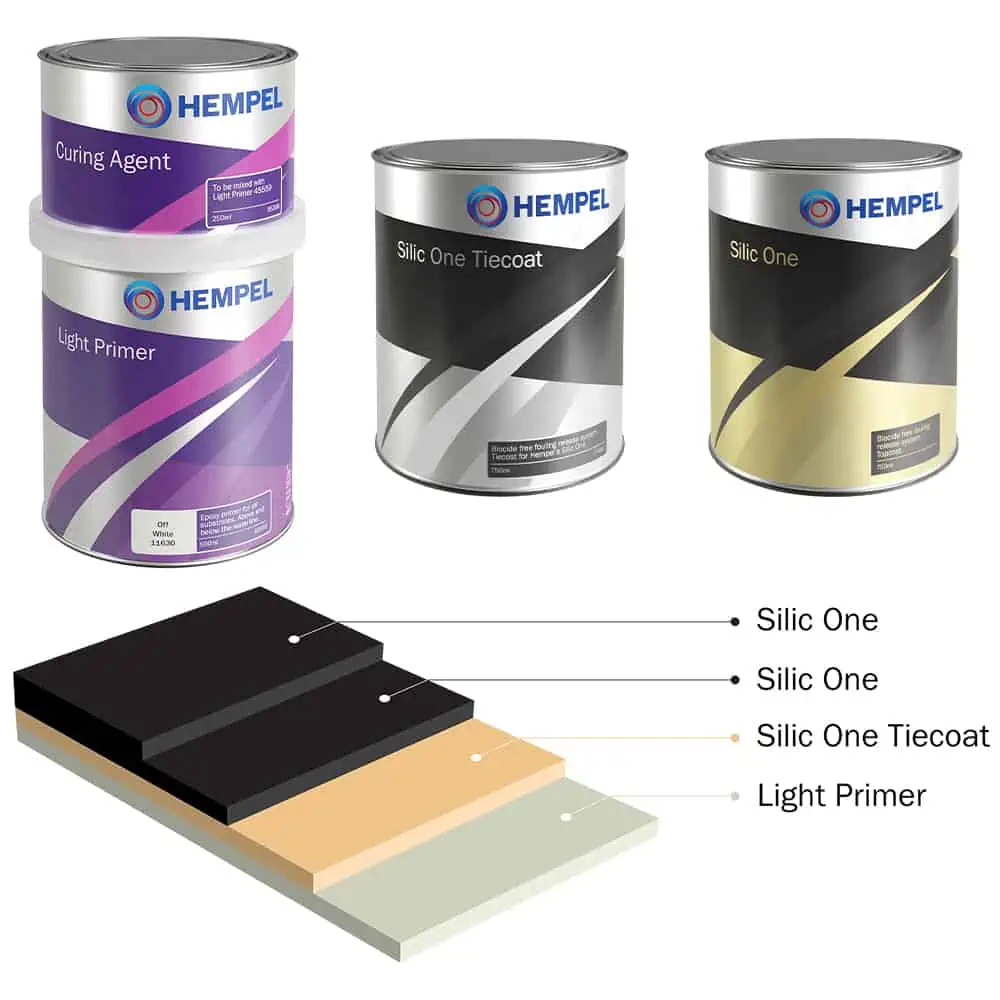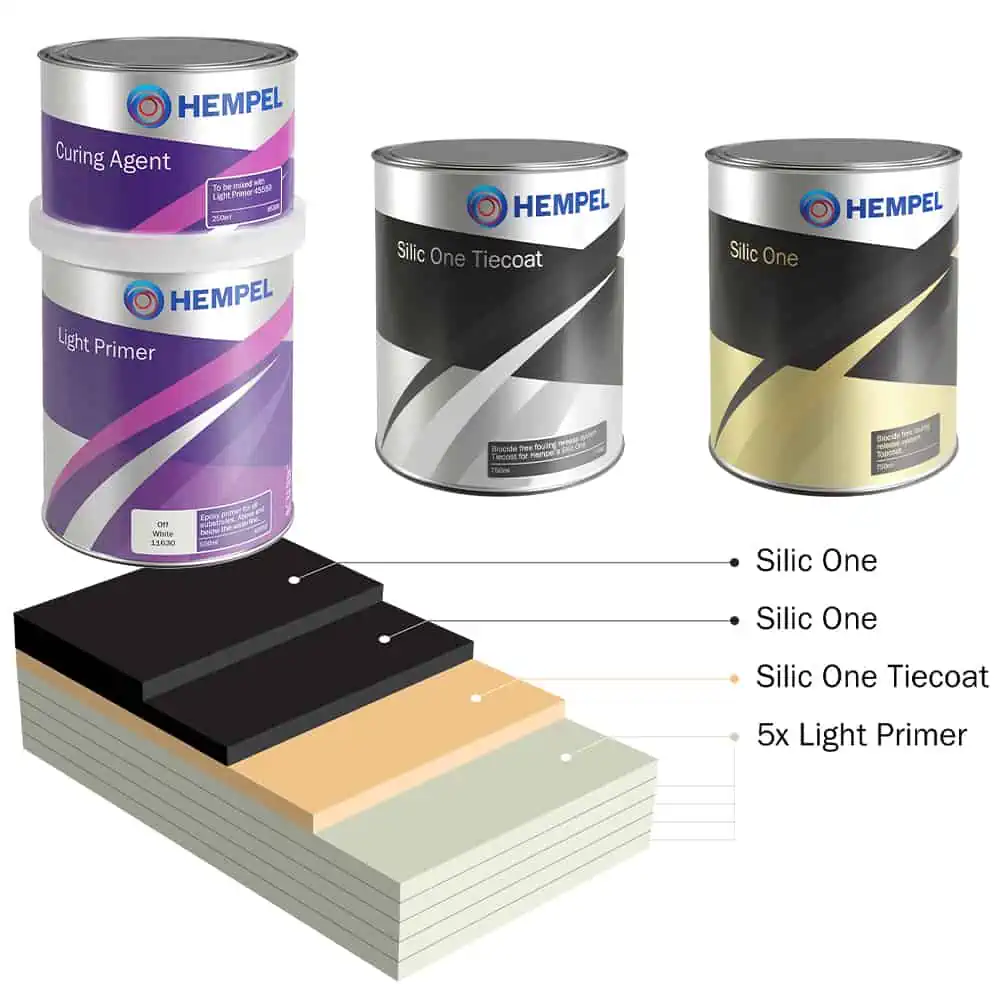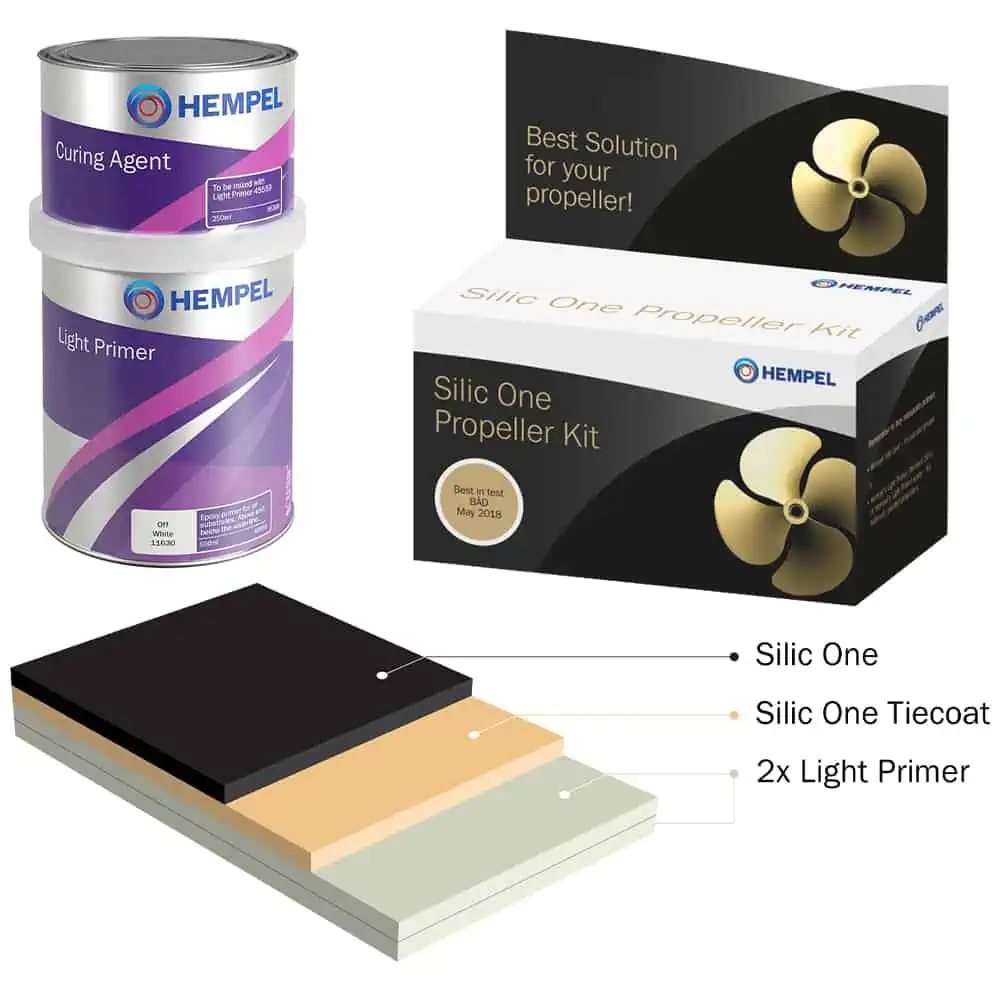
Hempel Silic One – the only biocide-free silicone antifouling solution with proven track record
What is Hempel Silic One?
Hempel Silic One is a biocide-free antifouling solution based on silicone and hydrogel. This gives the coating surface water-like properties, making it difficult for fouling organisms to attach to the hull and easy for them to be removed when the boat is in motion.
How is Silic One different from traditional antifoul?
Traditional antifouling works by releasing a range of bioactive ingredients that prevent organisms such as barnacles, slime and weeds from attaching to the vessel. This obviously has an environmental impact.
Hempel Silic One is biocide-free therefore much better for the environment. It gives the coating surface water-like properties, making it difficult for fouling organisms to attach.
Regardless of which style of antifoul you choose, keeping your hull free from fouling is important as a smooth hull will have less drag therefore using less fuel and decreasing fuel emissions.
The Silic One system consists of various primers, tie coats and top coats depending on the application you require.
Advantages of using Hempel Silic One
Biocide and copper free
Probably the most important advantage is that it is biocide free, therefore better for the environment.
2 years of protection and easy maintenance
Maintenance of Hempel’s Silic One is easy and simple. Maintenance cost is lower compared to traditional antifouling. In order to maintain the system, a new layer of Hempel’s Silic One should be applied every second year. The Silic One System performs more effectively if the boat remains in the water. If the boat is used in areas of high environmental conditions, or kept out of the water for an extended period, it may be necessary to apply a new layer of Hempel’s Silic One every year.
Use on all hull materials including metal
Most traditional antifoul can not be applied to metal hulls due to the copper content. So you have to use a specific specialist antifoul such as International Cruiser 200 Antifouling. Silic One can be used on almost any boat hull or propeller.
The system can be used over old antifouling
If the existing antifoul is in good condition you can apply the Silic One system on top. Just make sure you follow the correct procedure using the relevant primers and tiecoat.
Silic One applications
Silic One can be used in most applications, whether it be on a new hull, a previously antifouled boat or even on a propeller. You just need to follow the correct procedure. See Hempel’s Silic One application guide.
Video on how to switch from traditional Antifouling to Hempel Silic One system
Video on how to apply Silic One Propeller Kit to a bare propeller
Things to consider when making the switch to Hempel Silic One
Application is all about timing! There are strict timings from overcoating to immersion time that must be followed during the application process. If these are not followed the product may not perform correctly. This includes using the correct primers and tie-coats. See Hempel’s Silic One application guide.
Once Silic One and Tie-Coat tins are opened they must be used within 60 minutes. A tin that has been opened cannot be stored for later use. So it is important to purchase the correct amount for your job.
Silic One has a shelf life which unopened tins must be used before. Remember to check this before application.
Painting should be avoided if there is a risk of rain. The paint is also sensitive to humidity, therefore only open the tin just before use. It is also advisable to put the lid back on between pours into a paint tray. Don’t forget you have 60 minutes to use the whole tin.
It is strongly advised to apply the maximum film thickness without sagging for best performance and adhesion.
The boat can be launched in 24-36 hours after the last coat has been applied. Maximum time to launch is 1 month.
FAQ from Hempel
Will I save fuel with Silic One?
Yes, due to easy cleaning of the surface, coating can be free from fouling and the hull will have less friction in the water.
Can I go faster with Silic One?
Yes, the reduced friction of a clean coating will increase speed.
Can Silic One be applied at low temperatures?
Silic One can be applied down to 10°C.
How sensitive is Silic One to moisture?
Silic One requires a dry surface prior to application. Do not apply Silic One Tiecoat or Silic One when rain is expected or on a wet substrate.
How soon can I launch the boat after applying Silic One?
The boat can be launched from 24 hours to maximum 1 month after applying Silic One.
Can Silic One be applied on top of old antifouling?
Yes! With Silic Seal / Conversion Primer you can apply on top of antifouling in good condition (good condition means = if you would normally apply another layer of antifouling – it is OK to apply Silic One system with Silic Seal / Conversion Primer as well).
Is it possible to overcoat Silic One with traditional antifouling?
Silic One will have to be removed if you want to convert to traditional antifouling. Only fouling release coatings will stick to Silic One.
At what speed will the self cleaning take effect?
At faster speeds the self cleaning will be most effective. Even at lower speed self cleaning is possible with constant use.
Should I be afraid of too slippery surface when lifting the boat on slings?
No, you should simply secure the lifting straps together and to each other to prevent them spreading apart when lifting.
Silic One is soft. Does it encounter a lot of mechanical damage?
When scratching with a nail, the silicone may feel mechanically weak, but when the force is applied on a larger area, for instance with a fender, the silicone has a good abrasive resistance. This is primarily because the coating is soft and absorbs the energy.
What do I do if my Silic One gets a scratch?
It is easy to repair; simply re-build the paint system in the damaged area.
Will it be a problem if the applied surface is not completely smooth?
No, you will have the same performance even though the paint surface is not complete smooth.
Can Silic One for propeller be applied on all types of propeller materials?
Silic One for propeller can be applied on all types of metals and alloys. Epoxy and fiberglass based composites is also possible. Remember to use primer before applying the Silic One System.
How carefully should the pretreatment of the propeller be done?
You should do a proper cleaning and pretreatment (see application instruction). You should not paint on grease and oil.
How do I know if I get enough paint on the propeller?
You should apply as much paint as possible, but without sagging.
Can I polish the propeller during the season?
No, you should not polish the propeller during the season, you can clean it with a soft sponge instead.
Can Silic One be removed?
Yes. You can use Hempel’s Silicone Remover available in 5l cans. Contact your local shop for ordering the product.


